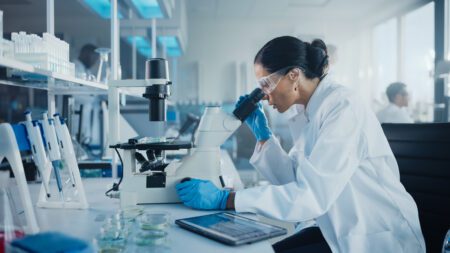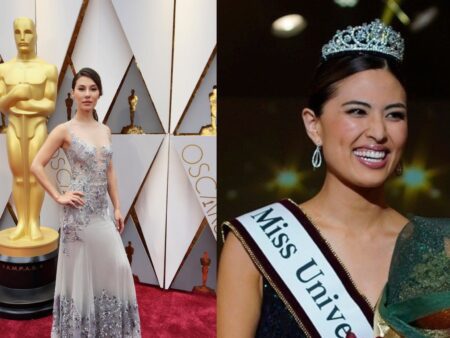
I always wanted to be a mother. But at 33, I was not ready. I was consumed with my career, not married, and wanted to push motherhood into the future. Yet an Anti-Müllerian Hormone (AMH) test done during a routine well-woman visit unveiled a problem that would consume the next four years of my life: I had a dramatically low egg reserve. My AMH was so low it was similar to a woman in menopause.
I was told the challenge with my condition, called Diminished Ovarian Reserve (DOR), is that assisted reproductive technologies are usually unsuccessful. If I wanted to have a genetic child, I needed to get started as quickly as possible.
Shocked, but still hopeful that I could conceive, my partner and I started trying six months later. I had work trips to Serbia, Thailand, Myanmar, and Turkey as a humanitarian public health advisor, and he was working over eighty hours a week as a doctor. We had to get our life organized, but I was convinced that I would get pregnant quickly. I had few eggs but was still “young,” right?
After a first negative pregnancy test and a few cycles that appeared anovulatory, it became clear that I did indeed have a problem.
I met with ten doctors within the first few months. Most suggested egg donation, since my chance of having a genetic child was around two percent.
I met with ten doctors within the first few months. Most suggested egg donation, since my chance of having a genetic child was around two percent. One doctor, an older man with glass eggs as decorations in his office, compared my reproductive system to a closing garage door. He said, “You need to run as fast as you can before the door is completely closed.”
Many doctors made me feel like my issue was unfixable, that women with DOR are never able to conceive, and that I would be wasting my money to try. It seemed that some clinics wouldn’t take women with low odds.
Many doctors made me feel like my issue was unfixable, that women with DOR are never able to conceive, and that I would be wasting my money to try. It seemed that some clinics wouldn’t take women with low odds. Of course, it is not an explicit policy, but it seemed implicitly enforced through clinic rules like cancelling cycles if there are fewer than four follicles (I never had more than three). In vitro fertilization (IVF) is a competitive business, particularly in a city like New York. Clinics boasted their success rates. I started to think that clinics were reluctant to take me, a patient with severe DOR, as we might bring down their clinic statistics.
I finally found a clinic that specialized in harder cases like mine. My doctor told me it would be difficult to have a genetic child, but possible. I “just” needed patience, resources, and some luck.
After a year of trying naturally, more tests revealed that I had additional reproductive challenges. My uterus was heart shaped, making it harder for an embryo to implant. This was resolved by uterine septum surgery. But that wasn’t all. Both of my fallopian tubes were blocked; so even if there had been a lone egg, the entry ramp for sperm was closed.
An eighteen-month period of monitoring every cycle followed. Our goal was to freeze ten Day 3 embryos before trying to transfer them into my uterus. The number was based on my doctor considering the low chance of my embryos being chromosomally normal and the high chance of at least one miscarriage.
Delaying implantation was decided based on the strong possibility that I would go into menopause after any pregnancy. I needed to get any eggs out of my body as quickly as possible.
That year and a half was emotionally grueling. I never knew which cycle would produce an egg, so all cycles had to be given a chance. I needed to catch the one golden egg left in my body.
That year and a half was emotionally grueling. I never knew which cycle would produce an egg, so all cycles had to be given a chance. I needed to catch the one golden egg left in my body.
There was a seven-month period when I did not ovulate at all. There were cycles when my doctor would search my tiny ovaries for even just one follicle, before kindly telling me it was “all quiet.”
There were times when there was one strong follicle growing – and I thought, this would be my baby! – but when they went to retrieve it, the follicle was empty.
Yet…some cycles were successful and we created eight embryos. Most women create that many per cycle. It took me eighteen cycles. When a cycle worked, I was so joyous. I was proud of my body, grateful to my doctors, grateful to the embryologist and her scientific magic. Grateful for the financial stability that made it possible. Grateful to my partner who was eternally optimistic that it would all work.
I never got to ten embryos. I was emotionally exhausted by the time I got to eight, so we stopped trying to retrieve and started transferring them.
My first pregnancy ended in miscarriage at seven weeks. My second pregnancy had multiple complications, which somehow felt normal to me. The fluctuation of hope and despair had become part of me, an expected part of the process. The eighteen-week anatomy scan revealed two possible genetic issues with the baby. Results from a cell-free DNA test reassured us that these issues were not caused by one of the three main chromosomal conditions, but there was a risk of some other problem. It was unlikely, but no one could tell us how unlikely.
The only way to know was to do an amniocentesis. The certainty of the amniocentesis results came with a one percent chance of miscarriage. We couldn’t take even that small risk of miscarriage. We decided we could live with the risk of having a baby with a problem, but we couldn’t live with increasing our risk of losing the pregnancy.
My baby boy arrived in early January during the height of the Covid-19 Omicron surge. Ten minutes after he was born, I was rushed to the operating room. Part of the placenta was still attached, and I was hemorrhaging badly. It turns out that the shaving of my uterine septum three years earlier likely damaged the uterine wall, causing the placenta to attach incorrectly. The surgery that allowed my uterus to be hospitable to growing my son also caused me to hemorrhage and almost need a hysterectomy in the hour after his birth.
Making those eight embryos cost more than $100,000. But it should have cost much less. Starting in January 2020, New York State, where I live, mandated large employers to provide insurance that covers IVF, with some eligibility restrictions. (New York is one of fewer than 20 states that has an infertility coverage policy.)
Given my challenges, my insurance plan wouldn’t cover my care because I had such a low chance of success. To qualify for coverage, my insurance required a FSH under 20, with an estrogen over 100. My FSH was never under 20. On a good cycle it was in the high twenties; and on a bad cycle it went above 100. I learned through a private DOR Facebook group that this was common. Most insurance companies considered this profile too unlikely for success.
My process for having a baby was only possible because my husband and I had money saved. If we didn’t, we would have had to give up.
I got pregnant because I persisted with all three things my doctor said I needed – patience, resources, and luck. My baby is also possible because the clinic was willing to take me, and not worried that my multiple failed cycles would impact their statistics. Some women with DOR are not given even the opportunity to have that emotionally-draining three-year process, because either they are told it’s impossible or they don’t have the financial resources to cover the multiple IVF cycles that are necessary when you only produce a few eggs per cycle. They are denied access to medical care due to their low chances of success.
Assisted reproductive technologies do not always result in a healthy baby, but women with DOR and other conditions building their families through modern medicine should be allowed to try.
Patients need not just information about their odds of success, but also the opportunity to proceed, even with a low chance. Fertility clinics and insurance companies should try to see and understand that even a low chance is still a chance to succeed, like in my case. Any person willing to go through the emotional rollercoaster of one’s body failing repeatedly should be given the opportunity for that one cycle to work, to catch that one remaining egg—to make a baby, to create a family.
Contributor
Laura Miller
Laura Miller is a Senior Technical Advisor for Health Programs at the International Rescue Committee (IRC). She works to improve access to and quality of health services for people affected by humanitarian crises. In her free time, she enjoys traveling, cooking, growing plants, and taking long walks.

Listen to stories, share your own, and get feedback from the community.


















